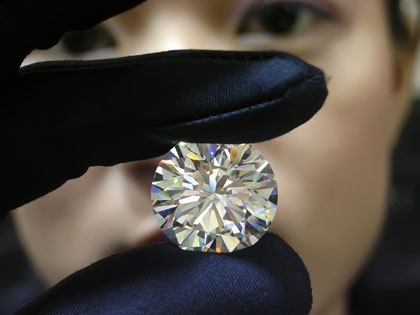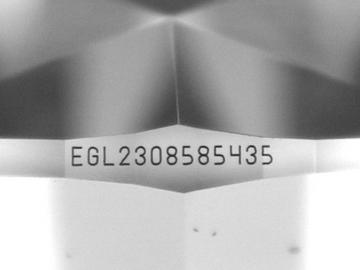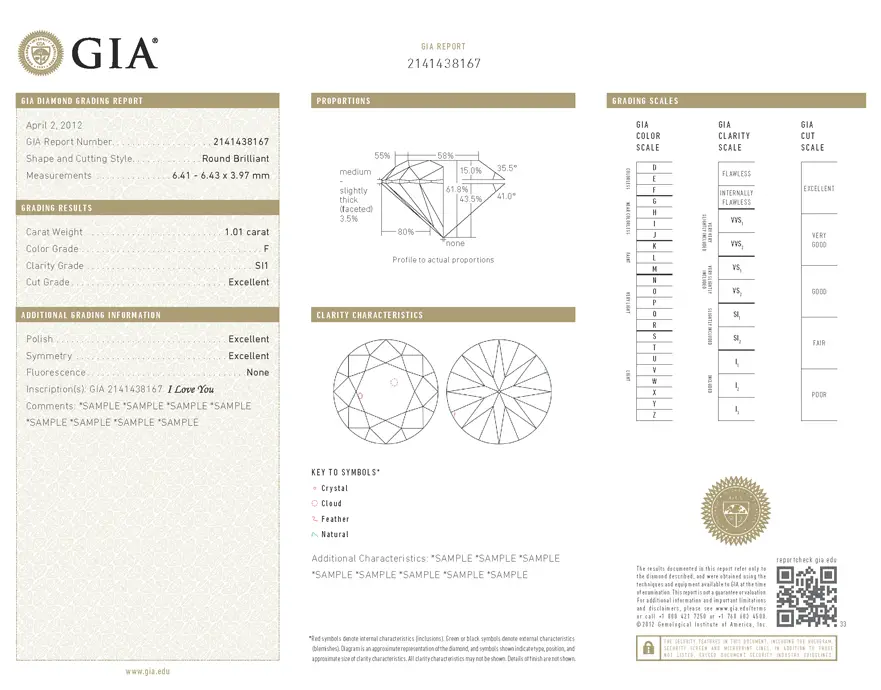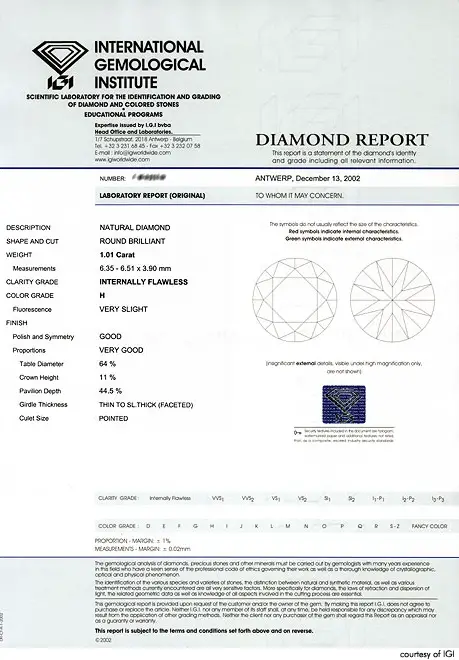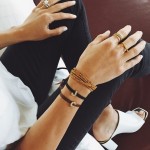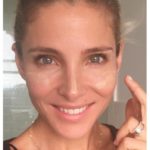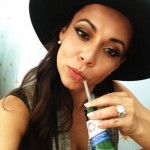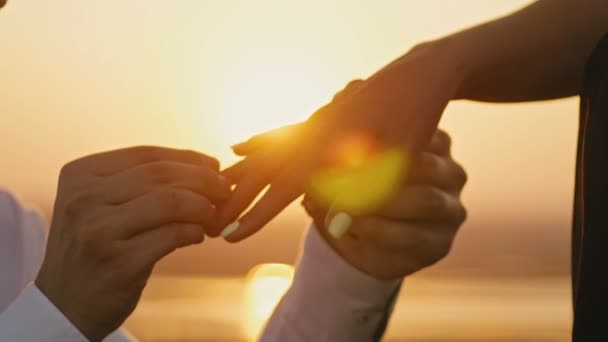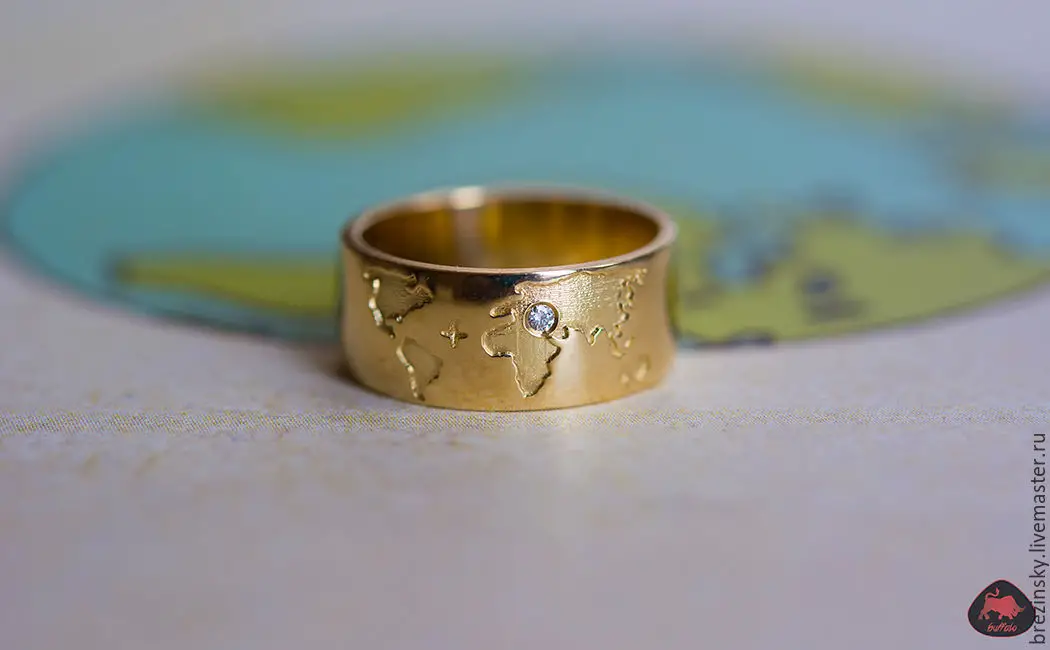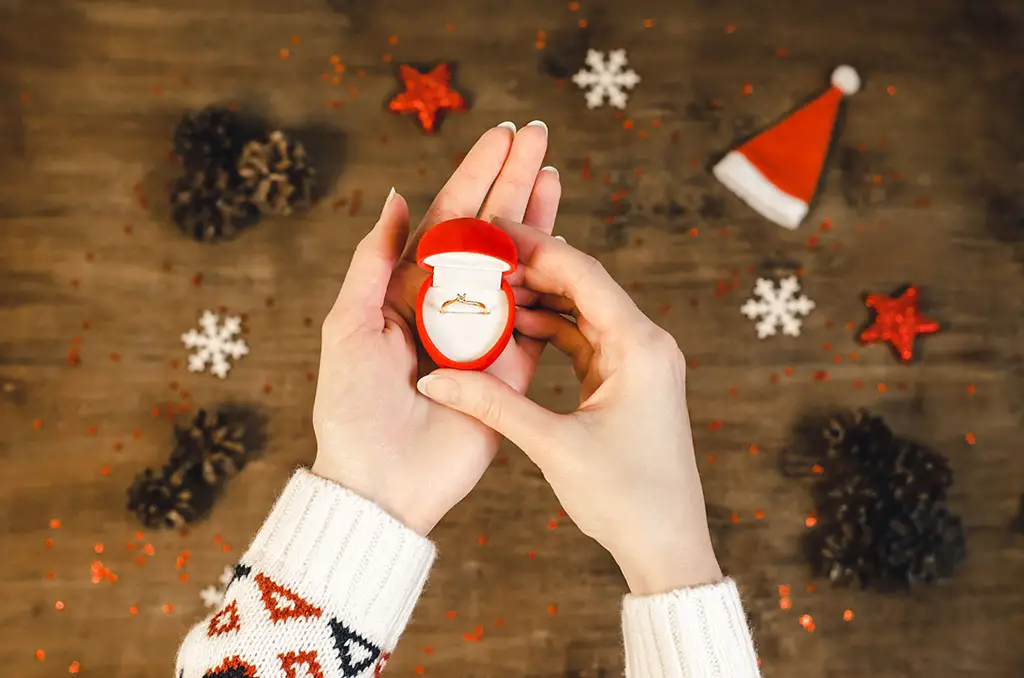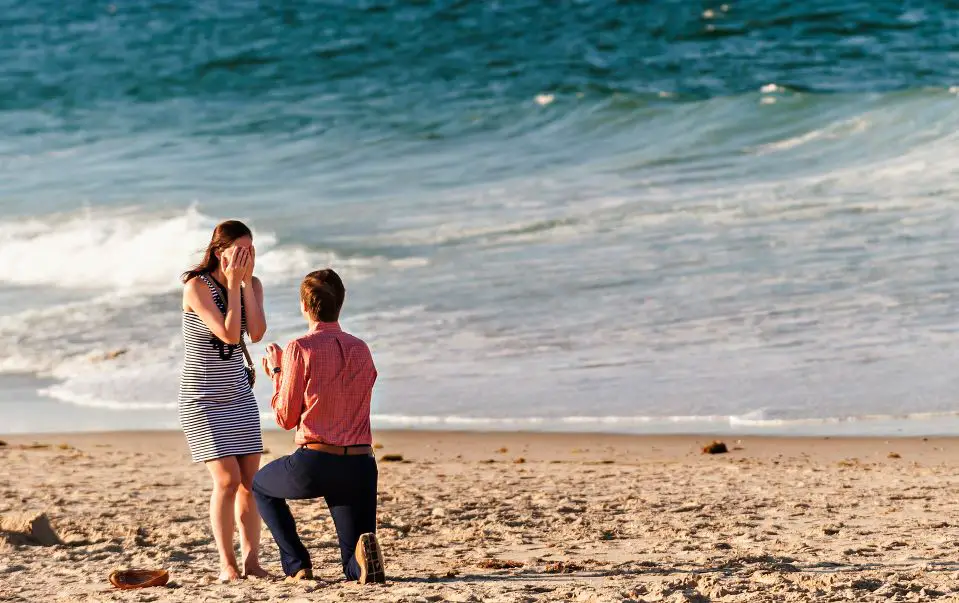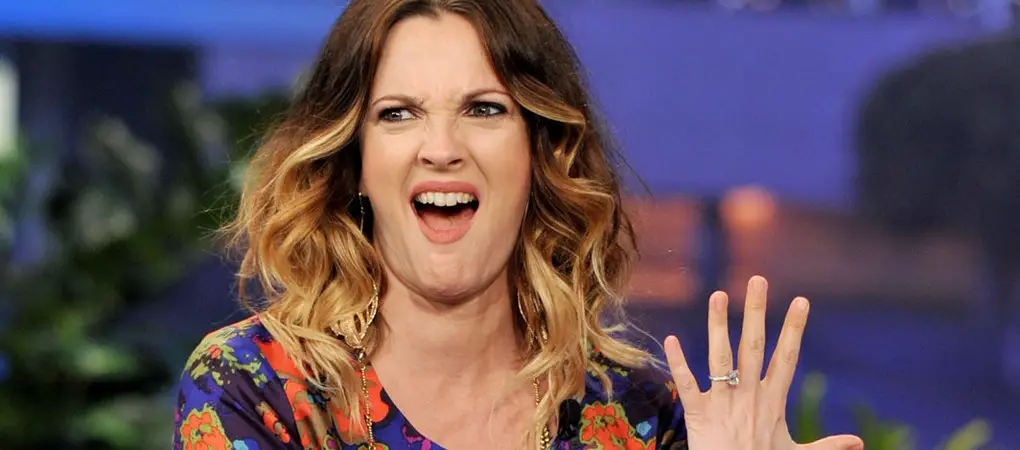Even if you don’t know exactly what the 4Cs are, you’ll no doubt have heard the term once or twice in reference to engagement rings. For the record: they stand for carat, cut, colour and clarity and together they determine the quality and value of your diamond. However, the only way to prove this is with a certificate – the 5th C.
When we say certificate, we don’t mean something that your jeweller has printed off and given you to say that you’re the proud owner of a new sparkly rock (some of them really do that – honestly). We mean an official certificate from one of the world’s leading gemstone institutions. Without a certificate, not only do you have no proof that what you’re buying is worth the money you’re spending; you don’t even have proof that it’s a real diamond, unless you’re an expert jeweller yourself and have the necessary equipment to examine it (and if you are, then why are you reading this article??). You’ll also run into problems if you’re trying to insure or re-sell your ring down the line.
All reputable jewellers will show you your diamond’s certificate without you having to ask. If and when you purchase that diamond, they’ll also give you the original copy. Needless to say, you should always ask either way.
Who Certifies Diamonds?
There are a handful of institutions who examine, grade and then certify diamonds. These institutions are completely unbiased towards any sector of the jewellery market; in fact the certificates they produce often contribute significantly to the price of a diamond, as they are the most detailed and most accurate analyses of a gemstone available. The primary institutions are:
- The Gemological Institution of America (GIA)
- International Gemological Institute (IGI)
- The European Gemological Laboratoty (EGL)
- Hoge Raad Voor Diamond (HRD), aka the Diamond High Council
- American Gemological Society Laboratories (AGSL)
- International Confederation of Jewellery, Silverware, Diamonds, Pearls and Stones (CIBJO)
If your diamond comes with a certificate from any one of these institutions, you can be sure that it’s the real deal and that you’re buying something of quality. All certificates from the above list will contain much the same information about your diamond; some will have more detail and some less, and they all display them in different ways, but the vital stats are all there. However, they also all have different grading criteria – so what may be seen as a ‘flawless’ diamond by the HRD may not be regarded as flawless by the GIA. But for the most part, these differences are very minor.
How do you know if the certificate is for the right diamond?
Nowadays, all new diamonds have a teeny weeny laser inscription along the girdle (the ‘edge’ or widest point where the stone begins to taper to a point). It’s so tiny that’s impossible for the naked eye to see, and only visible when the diamond is examined with a loupe. This inscription consists of an ID number and the letters of whichever institution certified the diamond. The number should match up with that on your certificate. If it doesn’t, your jeweller is in big trouble.
Antique diamonds won’t have an inscription, which means you’ll need to have complete trust in your jeweller. All the more reason to be as diligent as possible with your research – take the time to find a reputable jeweller with a great track record. If you have no certificate however, it’s not the end of the world; you can opt to get your diamond graded by one of the above authorities, although be warned: it doesn’t come cheap.
So, let’s take a look at a certificate…
Since most people regard the GIA as the most authoritative institution on the subject, we’re using one of their certificates as an example.
To make things that little bit more complicated, the GIA issues one of two certificates: a Diamond Grading Report or a Diamond Dossier. The Diamond Grading Report is slightly more detailed and reserved for diamonds of 1 carat and above, while the Diamond Dossier is for smaller diamonds and contains slightly less information (but don’t worry, all the vital stats are still present and correct). The important thing to remember is that no matter what certificate you have and which institution is comes from, the following information will be stated in one form or another.
On the left column, the ‘vital stats’ of your diamond will be listed. This includes the laser-inscribed serial number, the dimensions and carat weight (measured to the millimetre), and the cut type (round brilliant, princess, emerald, etc.). Then the nitty gritty grading details will be listed. This is a full breakdown of the 4Cs – colour, cut, clarity and carat – and how they rate. Each institution has different grading criteria and stages, but it will usually be something along the lines of ‘excellent’, ‘very good’, etc. Each one also uses different abbreviations to mark this- the GIA uses ‘VG1, VG2’ and so on. There may also be additional grading information such as polish, symmetry, etc.
On the GIA’s Diamond Grading Report, a diagram of the diamond is included that details the dimensions of each section of the stone (table, pavilion, girdle, etc.) and maps out any inclusions, giving details of which type and how severe they are. The majority of other certificates will do this in list form, and will also include their respective clarity and colour charts.
On the bottom or in a more prominent place the details of the institution will be listed and a guarantee that the certificate is genuine, issued directly from them, and so on.
Here’s another example from the IGI:
What should you do with your certificate?
Nothing! Just keep it in a safe place (and remember where you put it). It makes sense to get a spare copy or two just in case you misplace the original, however. You can obtain copies directly from the source, request them from your jewellery, or just make your own. Be aware that some insurers may only accept genuine copies from the jeweller, and not scans that you’ve made yourself. Some institutions also offer digital copies.
The Golden Rule
Never, ever, EVER purchase a diamond that doesn’t come with a certificate. No decent jeweller will let you do this, so if yours if avoiding questions about certificates or giving you suspect information, leave and don’t come back – you’re guaranteed to end up with a dud. Remember the GIA and its counterparts were set up to establish a UNIVERSAL standard for diamond grading, so no matter where you live or where you’re shopping, diamond certificates are par for the course. No certificate, no diamond!
